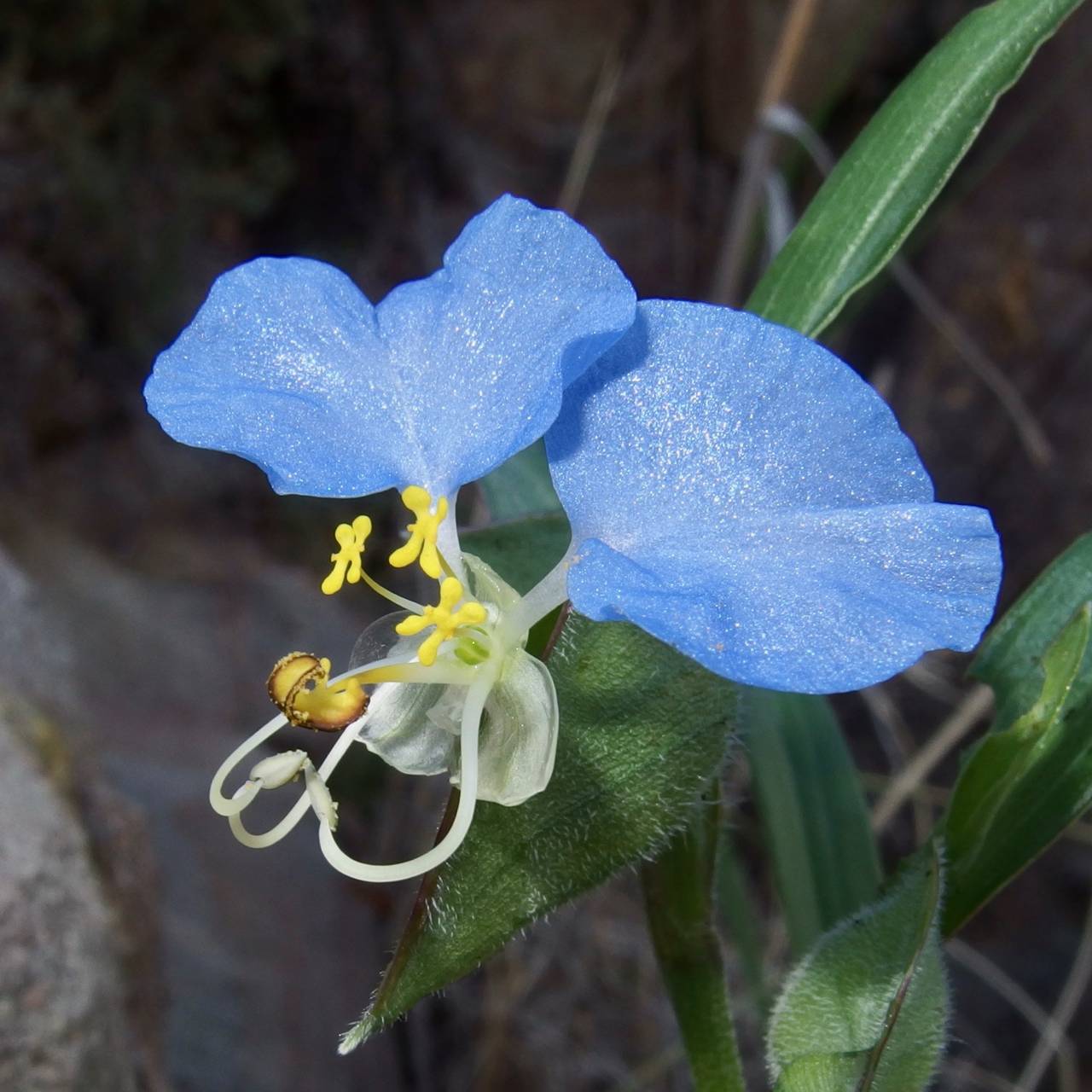
|
Commelinaceae |
|
|
Herbs, perennial or annual. Leaves basal or cauline, alternate; sheaths closed; blade simple, often succulent, margins entire, venation parallel. Inflorescences terminal or terminal and axillary [sometimes all axillary], sometimes becoming leaf-opposed, cymose (cymes scorpioid), thyrsiform or variously reduced, sometimes umbel-like, sometimes enclosed in spathaceous bracts. Flowers bisexual or bisexual and staminate on same plants, rarely bisexual and pistillate on same plants [bisexual and unisexual (staminate and pistillate), all on same plants], bilaterally or radially symmetric; sepals 3, sepaloid [occasionally petaloid], distinct or occasionally connate, usually subequal; petals 3, deliquescent, petaloid, distinct or connate, equal or unequal; stamens 6, all fertile or some staminodial or absent (rarely all stamens absent); anthers with longitudinal [rarely poricidal] dehiscence; ovary superior, 2--3-locular; ovules 1-seriate [2-seriate]; style 1, simple, usually slender; stigma 1, simple [rarely slightly 3-lobed], enlarged or not. Fruits loculicidal capsules [rarely indehiscent or berries]. Seeds 1--several [rarely many] per locule; hilum dotlike or linear; lidlike embryotega covering embryo. The flowers lack nectar and are ephemeral, lasting only a few hours. Their structure is seldom preserved in dried specimens. In the absence of well-pressed flowers, mature buds can be readily dissected in situ, and the arrangement and degree of development of the androecium and gynoecium easily determined. Some familiar genera, such as Setcreasea, Zebrina, Rhoeo, and Cuthbertia, have been reduced into synonymy under either Tradescantia or Callisia (D. R. Hunt 1975, 1986, 1986b). Further research is needed to corroborate this treatment, especially for the segregate genera of Callisia, such as Cuthbertia. The same generic delimitation has been followed by R. B. Faden (1998), R. B. Faden and D. R. Hunt (1991), and G. C. Tucker (1989).
PLANT: Annual or perennial herbs, glabrous to sparsely pubescent. LEAVES: alternate, distichous or spirally arranged, the sheaths closed, the blade simple, the margins entire. INFLORESCENCE: terminal or terminal and axillary cymes subtended by bracts or enclosed in spathes. FLOWERS: perfect and staminate, actinomorphic or zygomorphic; sepals 3, usually subequal, distinct or connate; petals 3, deliquescent, distinct, equal or unequal; stamens 6, all fertile or some staminodial, the filaments glabrous or bearded, the anthers with longitudinal dehiscence; ovary superior, 2-3 locular, 1-several ovulate, the ovules 1-seriate, the style simple, usually slender, the stigma simple or rarely slightly 3-lobed. FRUITS: capsules, loculicidal. SEEDS: 1-several, the hilum dot-like or linear. NOTES: 41 genera, ca. 650 spp., mostly tropical and subtropical. Faden, R. F. 2000. Commelinaceae. Pp. 170-197 in N. R. Morin (ed.), Flora of North America. vol. 22. Oxford University Press, New York. REFERENCES: Puente, Raul, and Robert B. Faden. 2001. Commelinaceae. J. Ariz. - Nev. Acad. Sci. Volume 33(1). |
|
This project was made possible in part by the Institute of Museum and Library Services [MG-70-19-0057-19].
Powered by Symbiota


